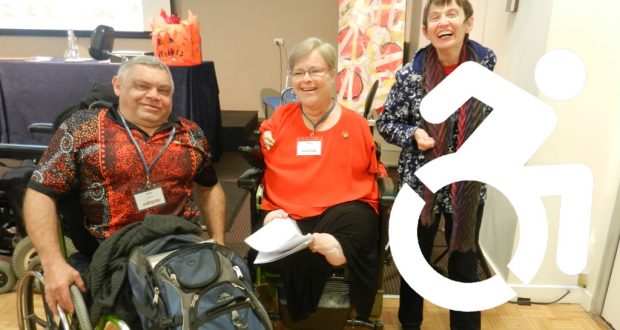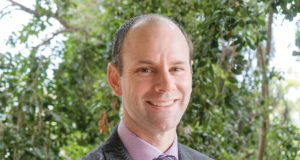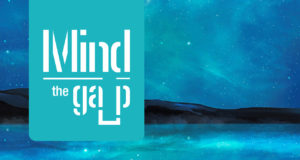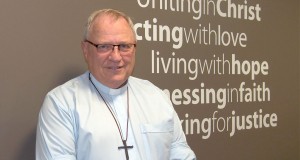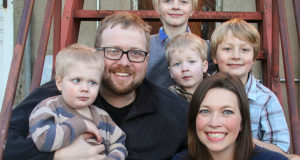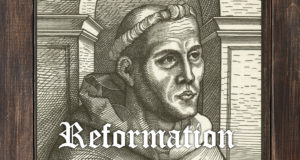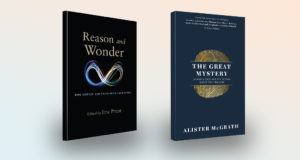Most Australians will either experience disability themselves or have direct contact with someone who has, but are churches equipped to be an inclusive environment for everyone? Sue Hutchinson examines disability, faith and what churches can do to be welcoming to all.
According to the Australian Institute of Health and Welfare, around one in five people in Australia have a disability and six per cent have severe or profound disability. About 12 per cent of the population provide informal care to an older person or someone with disability or a long-term condition. The data demonstrates disability really is everyone’s business.
The likelihood of living with disability increases greatly with age. As one participant with significant disability attending the recent Exclusion and Embrace conference in Melbourne laughingly stated, “Stay alive long enough and you too will experience disability!”
Dr Hans Reinders, professor of Ethics and Mental Disability at the Free University of Amsterdam, notes in his book Receiving the Gift of Friendship, “Given the current role models that dominate our contemporary culture … we desperately need countercultural experiences that expose the myth of humans as forever youthful, ideally attractive, aggressively mobile, and physically and mentally strong.”
Challenging perceptions
Bill Gaventa, director of the Summer Institute on Theology and Disability and the Collaborative on Faith and Disability based in Texas, says that disability challenges us to profoundly reflect to gain “deeper understanding not of disability, but of who we all are”.
The question of what meaningful life is has significance for how we view people with disability. This is particularly relevant for people with profound intellectual disability who, by their very disability, are seen as unable to do the valued things others do like think, reason and contribute. Perhaps this is one reason why society values their lives so little.
But what is it that makes us really human? Often we value ourselves and others only for what we can do, the roles we fulfil and the relationships we are in; however, as Christians there is something profound and important missing here.
“There is absolutely nothing important about my being if it were not for the love of God,” writes Dr Reinders. “Whether or not we are capable of seeing a profoundly disabled [person] as a human being depends very much on how we understand our own being as humans.”
The doctrine of “Imago Dei” says that we are created in the divine image, and Dr Reinders points out “it must surely mean that I am created in God’s love, since love is what defines the God in whom Christians believe.”
Bill Gaventa addressed the Exclusion and Embrace conference on the topic, “God created the world, and it is good; disability is part of God’s creation, and it is good.”
Illness, impairment and disability are simply part of the human condition. To think otherwise denies people’s full humanity.
Towards an inclusive society
Many of us remember when people with disability were hidden from our sight, in large institutions or even at home. For years now, integration in society has been the big aim and people with disability now live in our communities. But do they have a sense of belonging?
Unless we use deliberate strategies to make sure people with disability are truly included, far too often it does not happen and tragically they remain isolated, even though surrounded by many other people.
For those with a significant intellectual disability, life can be structured around only two types of relationships: with family if they are lucky and with people who are paid to support them.
They often lack genuine friendships and people who freely choose to spend time with them. In other words, they are located “in” the community, but they are certainly not “of” the community.
An “open church” open to all?
There is no question that churches can be important communities for people with disability—they are, after all, made up of people and there are wonderful possibilities for relationships and opportunities for belonging.
But there does seem to be a pronounced gap between the numbers of people with disability in the general population and in Australian churches. The 2011 National Church Life Survey indicated that under eight per cent of people attending Christian churches around Australia identified as having a disability and more than 18 per cent had a disabled family member.
Generally churches would express an openness to people with disability coming along but too often they don’t come, so what is behind the disconnect?
People with disability have often had unfortunate experiences of church with some attendees feeling unwelcome or excluded, or that they’ve been treated as children. They may not have even been able to follow the service due to vision or hearing impairment.
Karenne Hills is a mother of two sons with disability, and in the past she was completely marginalised within her church community and felt entirely unsupported.
For both her and her family there are important factors when seeking a new church community.
“I’m longing for a church family where I can just be accepted, to be different, that I can contribute wherever I can and have some really deep conversations,” says Karenne.
For the needs of her children, she is looking for a place where they are welcome and plugged into social activities and can build a network of friends.
Seek and you shall find answers
Every person with disability is different and the best way to find out what would be helpful to enhancing their experience of church is simply to ask.
Dr Damian Palmer is a sessional lecturer at United Theological College in Sydney. He and his wife have two children, one of whom, Bethany, is a teenager with profound intellectual disability.
“There’s no wrong question, I may say there are some wrong statements but I can’t imagine there’s a wrong question,” says Damian.
“I’m always ready to answer someone’s question about Bethany, or life with Bethany, or what that means or why does she do this, or why that.”
He recommends families share with congregations what is behind a person’s unusual behaviour. For example Bethany likes to touch people on the backside because she loves the patterns on the fabric. Damien explained the behaviour and now people cope with this and even talk to her about the fabric because they understand.
Without deliberate thought and planning on the part of faith communities, visible and unintended barriers can be there, sending a message of exclusion.
To combat this, audit tools are available to help assess your church facilities and practices, from the obvious like physical access to the less obvious like everyone standing for prayer and blocking the view of someone using a wheelchair.
Meredith Allen is highly regarded across the world in the field of augmentative and alternative communication and has lived with obvious physical disability since a young age. She doesn’t have functional speech and a communication program on her tablet gives her a voice.
Meredith attends a Uniting Church in Melbourne, recently renovated to make it fully accessible, and has a powerful message for other congregations: “The church has to adapt—we either grow and develop, or we die.”
To purchase the Accessible Church Manual from CBM visit cbm.org.au/luke14/order
To view the Presbyterian Church USA’s online guide Congregational Audit of Disability Accessibility & Inclusion visit pcusa.org/resource/congregational-audit-disability-accessibility-incl/
 JourneyOnline
JourneyOnline
